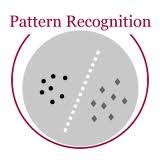Advanced automotive active-safety systems, in general, and autonomous vehicles, in particular, rely heavily on visual data to classify and localize objects such as pedestrians, traffic signs and lights, and other nearby cars, to assist the corresponding vehicles maneuver safely in their environments. However, the performance of object detection methods could degrade rather significantly under challenging weather scenarios including rainy conditions. Despite major advancements in the development of deraining approaches, the impact of rain on object detection has largely been understudied, especially in the context of autonomous driving. The main objective of this paper is to present a tutorial on state-of-the-art and emerging techniques that represent leading candidates for mitigating the influence of rainy conditions on an autonomous vehicle's ability to detect objects. Our goal includes surveying and analyzing the performance of object detection methods trained and tested using visual data captured under clear and rainy conditions. Moreover, we survey and evaluate the efficacy and limitations of leading deraining approaches, deep-learning based domain adaptation, and image translation frameworks that are being considered for addressing the problem of object detection under rainy conditions. Experimental results of a variety of the surveyed techniques are presented as part of this tutorial.
翻译:一般而言,先进的汽车主动安全系统,特别是自治车辆,严重依赖视觉数据对行人、交通标志和灯光等物体进行分类和本地化,协助相应的车辆在其环境中安全机动,但是,在具有挑战性的天气情况,包括雨季条件下,物体探测方法的性能可能会在相当大程度上退化。尽管在开发排水方法方面取得重大进展,但降雨对物体探测的影响在很大程度上没有得到充分研究,特别是在自主驾驶方面。本文件的主要目的是介绍最新和新兴技术的辅导,这些技术代表了减轻雨季条件对自动车辆探测物体能力的影响的主要候选者。我们的目标包括调查和分析利用在清楚和雨季条件下收集的视觉数据所训练和测试的物体探测方法的性能。此外,我们调查和评价正在考虑用于解决在雨季条件下进行物体探测问题的各种调查技术的实验结果,作为这一教学的一部分。


